By David Dodge, GreenEnergyFutures.ca
The Salvation Army owns 1,400 buildings in Canada. It is one of the largest not-for-profit social service agencies in North America so when they started building Grace Village a new 175-unit supportive living facility they really wanted to make it net-zero.
Michaela Jones is the Salvation Army architect leading the project, but she was told it was too expensive to build net-zero (also see Net-Zero 101).
So they issued RFPs for a standard code-built building. The quotes came in at close to $23 million dollars.
Net-Zero-Ready, an achievable goal?
Still, Jones still wondered if they could do more. “We were ready to go to tender and we were just questioning whether or not we could do more with lowering the operational costs.”
The team revisited their goals. “How can we be a global citizen in the context of climate change,” Jones wondered. She was aware of the most recent International Panel on Climate Change report and the actions of Canada’s federal government to tackle climate change.
“As a team, we decided that a net zero energy ready would be an achievable goal for this building.”
“We switched gears. We did a cost estimate in 2020, and the project value came out at $23 million. Then we decided what would it look like if we went to Net Zero Ready, energy ready?”
Then the bids came in and Jones and her team were very surprised when “The tender amounts came in within one percent of our original estimate.”
“It was very surprising” because it included geothermal and ground source heat pumps, a vastly improved building envelope, solar and other initiatives that would help them get to net-zero ready.
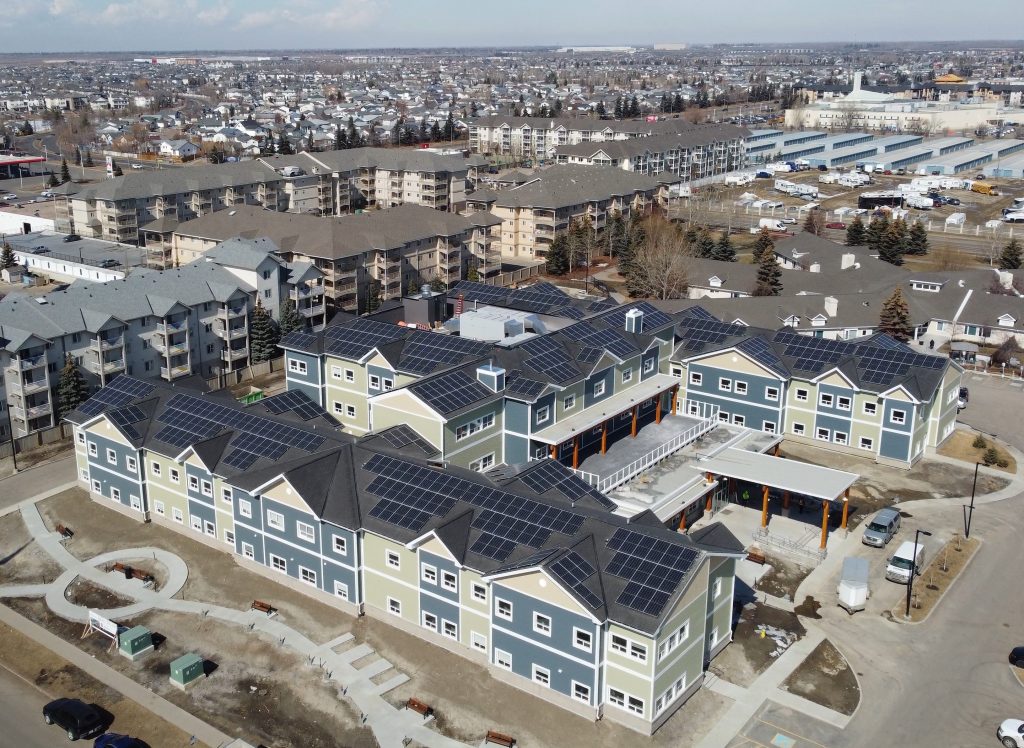
Net-Zero ready will save $240,000 per year
The project wound up costing about 4% more than the original code-built quotes, but half of that increase was money spent to overcome site challenges. It only cost about 2% more for all of the efficiency features.
“We will make our money back in four years with our lower operating costs – it’s pretty incredible,” says Jones.
“For electricity and natural gas, we’re looking at $240,000 a year of savings. And over the lifetime of the building, say 25 years, that’s about 6 million dollars,” says Jones.
And this is very good news for the Salvation Army because it’s often easier to raise money to build new projects, but it’s much harder to raise money to pay utility bills.
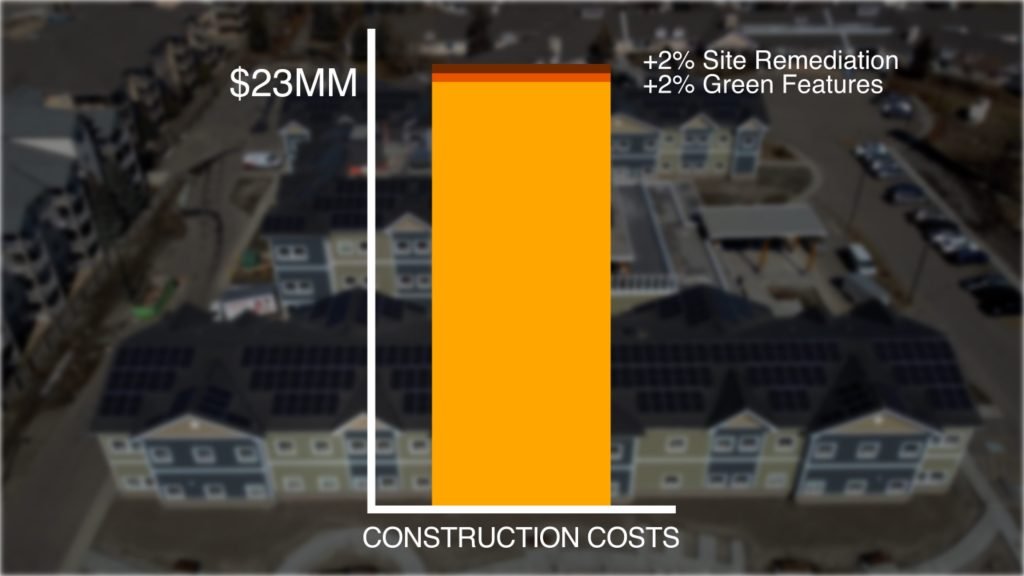
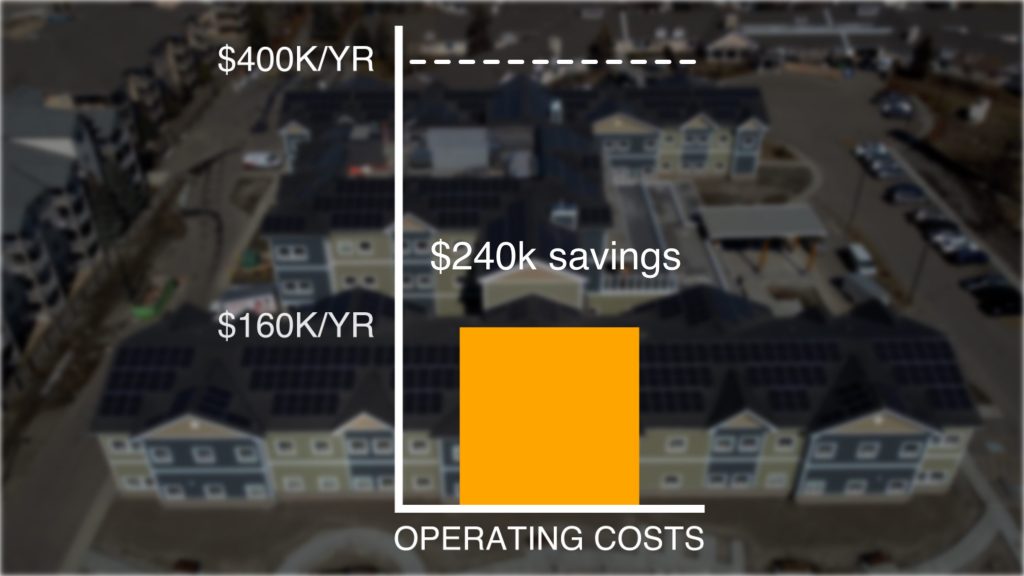
How Grace Village achieved net-zero ready
Donny Kroening is the project manager with Synergy, the general contractor that built Grace Village. He says there are three key sustainability features that transformed the complex from code-built to net-zero ready.
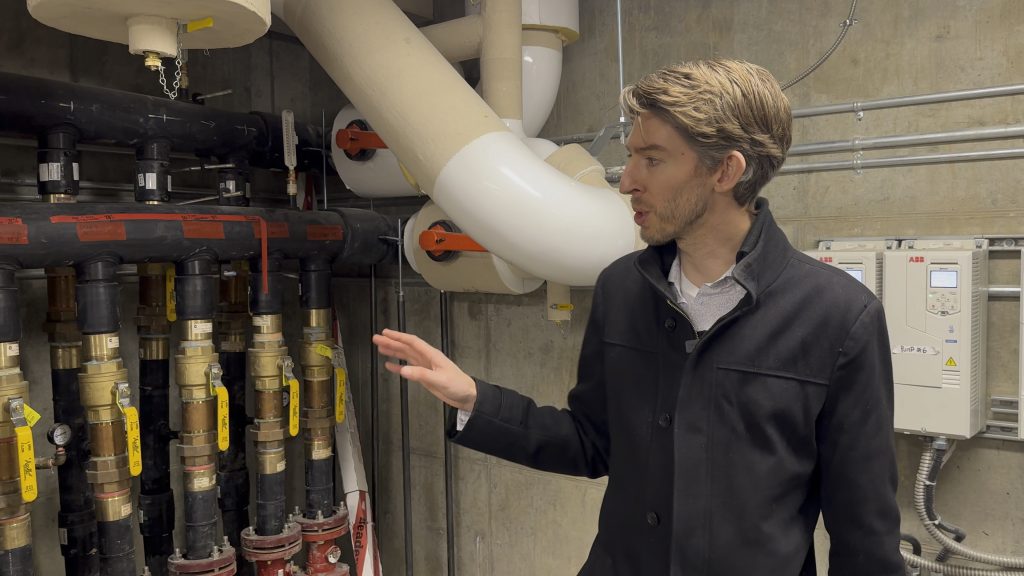
1. Geothermal heating and cooling
The first key sustainable feature is the geothermal heating and cooling system says Kroening.
“This geothermal system utilizes 36 wells. Those wells go 500 feet deep into the ground, and then they come to these five headers, and then those five headers distribute that heat or cooling depending on the season, to 108 heat pumps throughout the building,” says Kroening.
This is key because the heat pumps are up to 300% efficient at delivering heat and up to 700% efficient at delivering cooling (also see Heat Pumps 101).
This was fortuitous because, after several severe heat waves, they changed the specifications, to include air conditioning (also see Geothermal 101). This would have raised operating costs considerably. Instead, the energy-efficient ground source heat pumps have cooling built in.
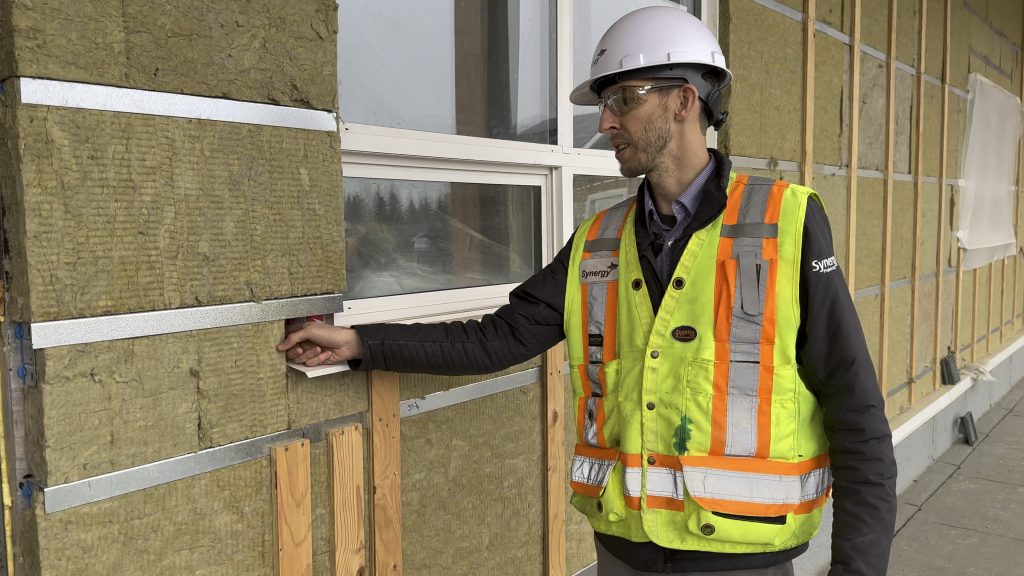
2. Well-insulated, air-sealed walls
“The second key feature of this building is the envelope system itself,” says Kroening. Inside the 2×6 walls, there are five inches of spray foam insulation which also seals the envelope tight. Then on the outside of the wall, they added three inches of Rockwool insulation making the wall system about 9 inches thick.
“Together it achieves an R44 [insulation] value, which is really, really good,” says Kroening.
Of course, the windows are triple-paned as well.
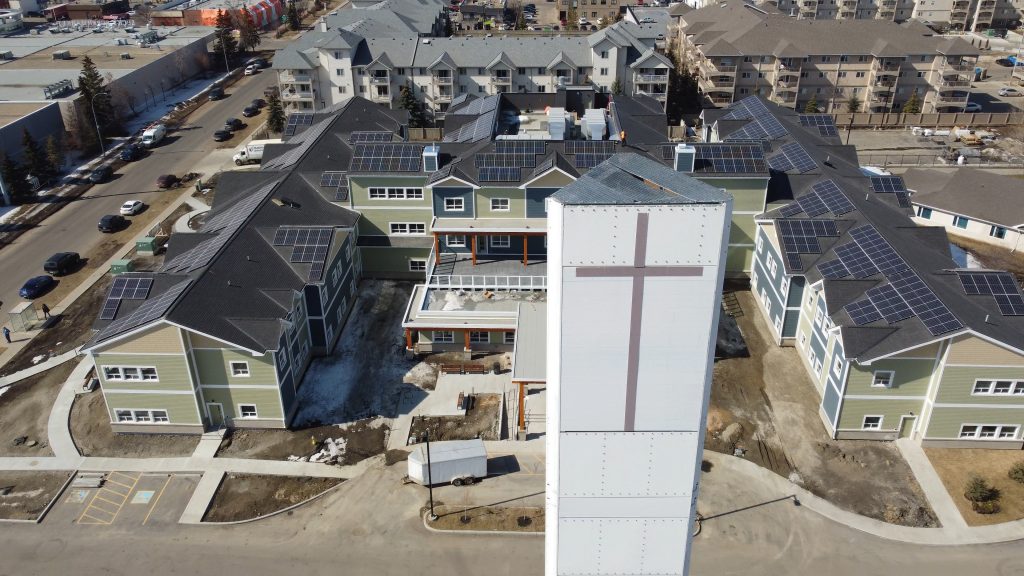
3. Solar power
The third key sustainability feature is solar, says Kroening. The building is covered with 512 solar modules that form a 236-kilowatt system, enough to provide most of the electricity needed for the electrical and heating systems.
The only reason this complex is net-zero ready instead of net-zero us there wasn’t enough roof space for enough solar to provide all of the energy needed on a net annual basis.
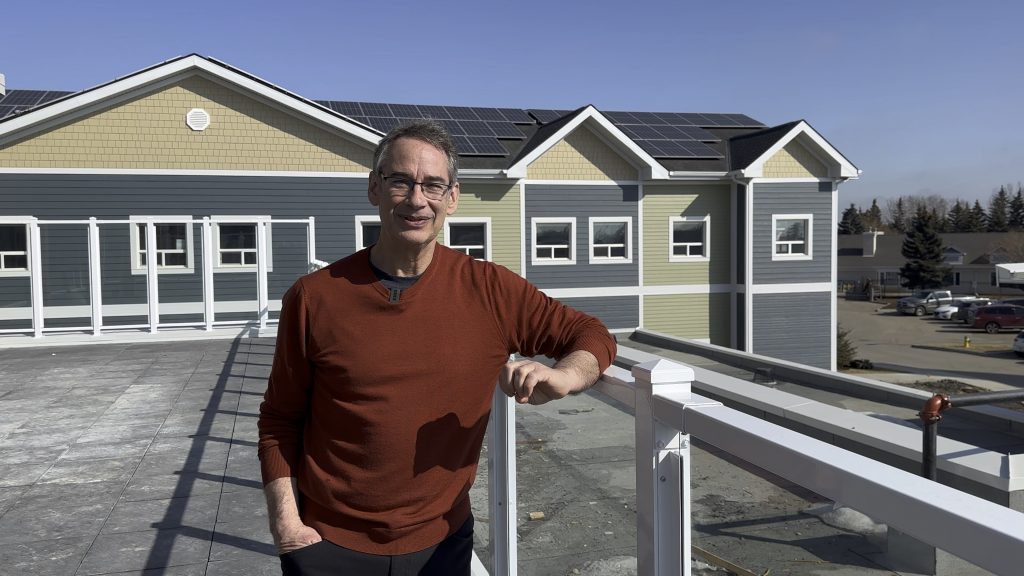
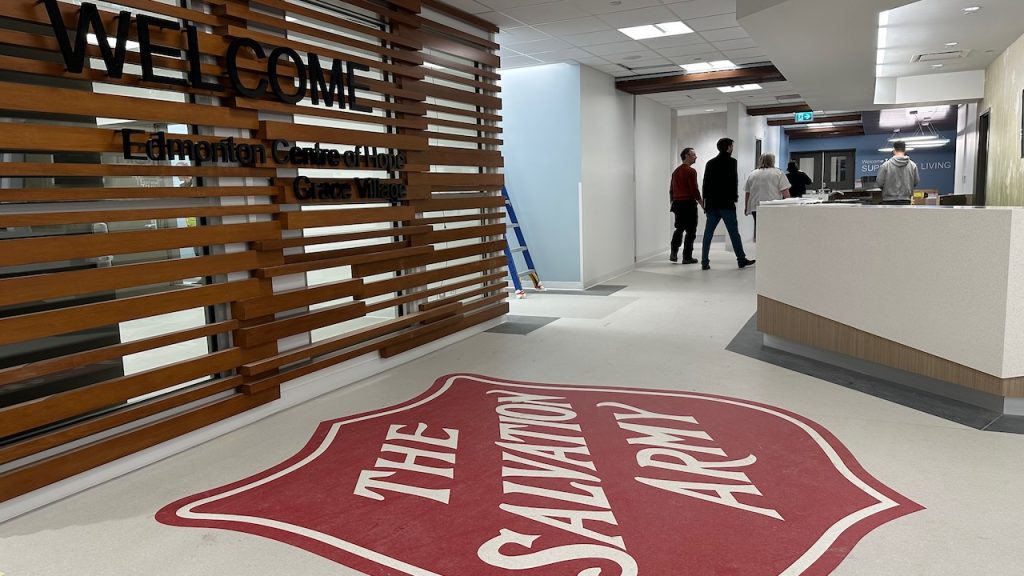
Net-zero is a superpower for a not-for-profit
Most of the funds for the Salvation Army come from donations, grants and other similar sources. “We have a responsibility to use those [funds] in the smartest manner possible,” says Richard Shields a project manager with the Salvation Army.
“Lowering the cost means we can then save money on the facility and put that towards the programs, which are what the people are actually donating the money for,” says Shields.
The Salvation Army has a budget of almost one billion dollars in Canada and Bermuda. Sally Ann helps 2.6 million people a year with their programs and supportive, transition and recovery housing. They do this with half a million volunteers and professional staff.
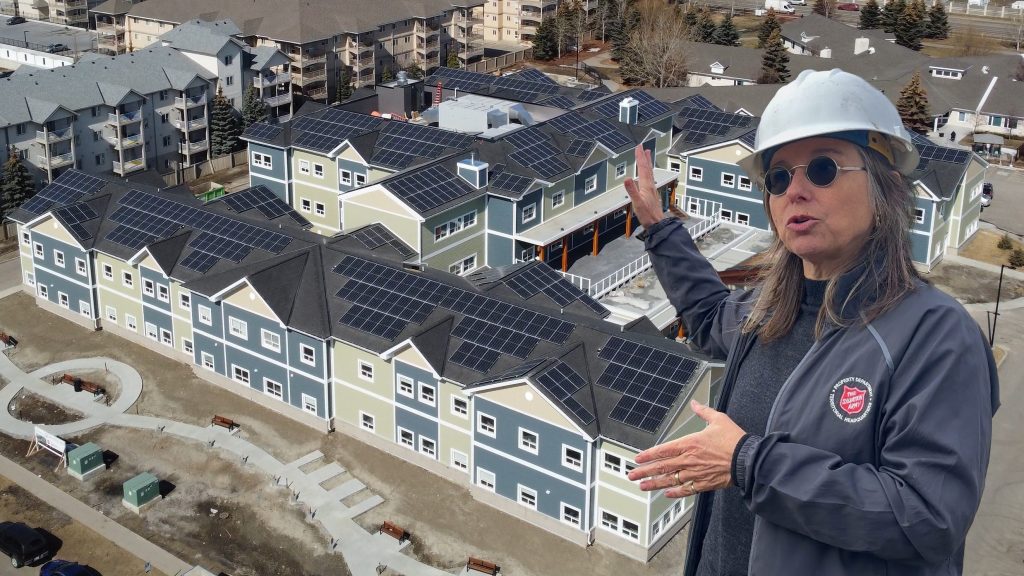
The way to build affordable, climate-resilient buildings
So what has Jones learned from this project? “My goal is that this project is a precedent for the Salvation Army. So, we’ve done it, now we can do it again and we can refer to this project and incorporate what makes sense for other projects.”
True enough, the economics of geothermal heating hit a sweet spot in low rise, apartments, office buildings and institutions such as schools.
And to achieve internally accepted climate goals we need to dramatically reduce emissions from buildings.
“About 30%, even 40% of our carbon emissions are from buildings. So, if we don’t tackle buildings. We’re not going to get to where we need to get to by 2050,” says Jones.

